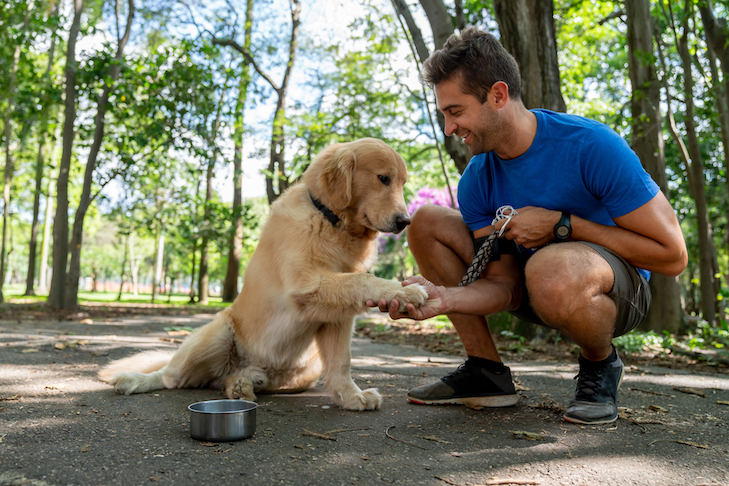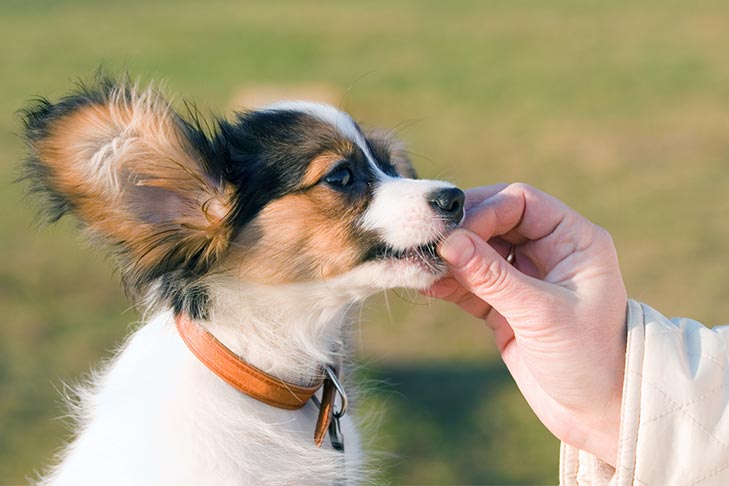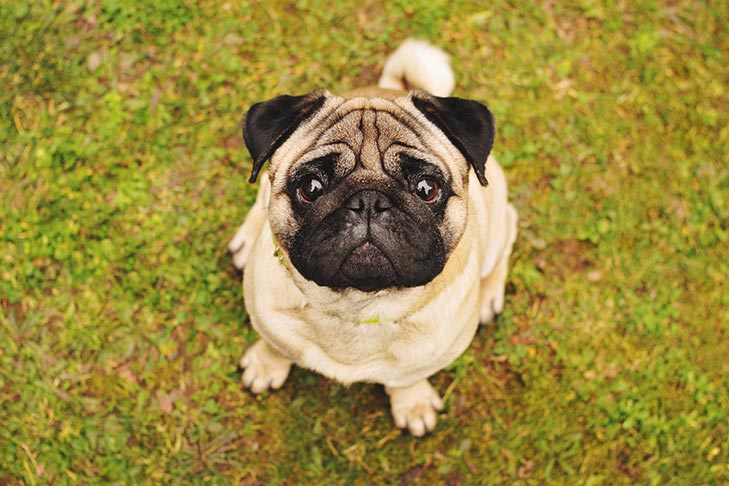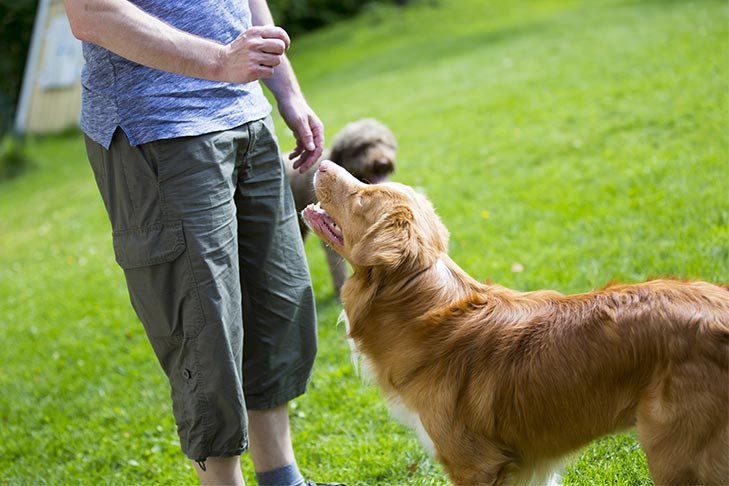
When working with our dogs, we want to teach them new skills, build their confidence, and have fun together. Dogs aren’t robots, and even if we think we’re going into a regular training session, sometimes they can get nervous or spooked. But why does your dog get scared while you’re training? Here are things to keep in mind if your dog gets anxious as you train together
Why Do Dogs Get Nervous or Stressed?
Just like people, dogs can get frightened while on walks or during training sessions. The more your dog was socialized as a puppy, the higher the likelihood they’ll be resilient during training sessions. This means that during the first years of their life, they were gradually exposed to new sights, sounds, and experiences, making them more comfortable in new situations. Regardless of how socialized your dog was as a puppy, breed personality traits and an individual dog’s temperament can also influence how they respond to stressors. Here are some experiences that may stress out your dog during training.
New Training Techniques
Be thoughtful when you’re training, especially when you’re doing something brand-new. Think about how you are engaging with your dog and interacting with their personal space. For example, leaning over your dog or walking into them to teach different tricks or commands could make some dogs uncomfortable or fearful.
It’s important to remain calm during training sessions. Try to avoid getting upset or raising your voice. Dogs are sensitive to human emotions, so staying calm and confident can help your dog recover from stress more quickly.
When training our dogs, we want to be utilizing positive reinforcement techniques. This involves rewarding your dog when they do something correctly, which helps them to develop and maintain positive associations with training.

Environmental Stressors
Dogs may also worry because of external factors that are new to them. That may include training in a new area that they find overwhelming or distracting, or working in familiar environments with people and dogs they’re not familiar with. Unexpected changes in the environment, like a thunderstorm passing through, can also cause fear.
Increased Difficulty
Sometimes, you may try to do too much too quickly with training. As a result, your dog may not be certain about what you want them to do and then react fearfully.
Alternatively, they might get scared of new things that are added suddenly. You’ll want to introduce equipment or props gradually. For example, if you’re training in agility, you can introduce your dog to jumps at low heights. That way, these new objects will seem less intimidating. Once your dog is confident working with the jumps at a lower height, you can adjust so the contact equipment is at full height.
What to Do if Your Dog Gets Scared While Training
If your dog gets scared, try adjusting your training plan in that moment. Give verbal encouragement in a happy tone, urging them to move away from the stressor, and offer treats. Once your dog is at a comfortable distance from the stressor, ask them to perform a behavior or trick they know well or enjoy doing, such as “sit” or “wave.” Offer lots of praise and treats, then end the training session on a positive note.

Allow your dog to approach the stressor at their own pace. When your dog is at a far enough distance where they feel safe, reward them for showing any self-directed curiosity to the stressor. We want to avoid luring a dog closer to a stressor because they may become startled once they realize how close they’ve gotten. This situation can lead to worsening fears.
You’ll want to adjust future training plans using desensitization and counterconditioning approaches. Desensitizing means you’re getting your dog used to a stimulus by exposing them to it in small amounts, then gradually increasing the amount of exposure. Counterconditioning involves providing a positive experience whenever your dog encounters the stressor. For example, if your dog worries when they’re in an unfamiliar environment, you can start by introducing them to quiet locations that are new to them, incorporating treats, toys, and play to help them become more comfortable.
It’s not helpful to push your dog through their fears, as that can result in them shutting down and becoming withdrawn. When dogs shut down, they’ve been pushed beyond their comfort level. As a result, the next time your dog is exposed to a stressor, they might go over their anxiety threshold and even react aggressively.
Teach Your Dog to Create Distance
If your dog gets stressed, you can help them by moving away from the stressor. Pulling them away with a leash adds pressure, making them more worried and frustrated. Instead, teach them to do an emergency U-turn.

You’ll want to teach this behavior at home or in a quiet area without distractions. Then, you can start practicing while on walks or in public.
Step 1: Begin walking forward with your dog on a leash. After a few steps, stop, then get your dog’s attention by using an excited tone of voice, as well as treats and/or a toy.
Step 2: With the dog’s focus on the toy or treat, turn around and lure them quickly in the opposite direction (away from whatever your dog finds stressful).
Step 3: Continue moving quickly away from the trigger, inspiring your dog to chase you. Offer lots of praise, as well as treats and toys, as your dog comes with you.
Step 4: When your dog is familiar with this game and easily follows your lure and turn, you can begin to introduce a verbal cue of your choice (like “escape” or “turn”) in an upbeat tone. After some practice, you’ll be able to phase out the treat or toy lure and give your verbal cue before rewarding your dog.
Get Support
If your dog gets scared by situations you encounter regularly, consider working with a dog trainer who has experienced in working with fearful dogs. They can help you develop an ongoing training plan, understand why your dog is fearful, and build your pet’s confidence.

